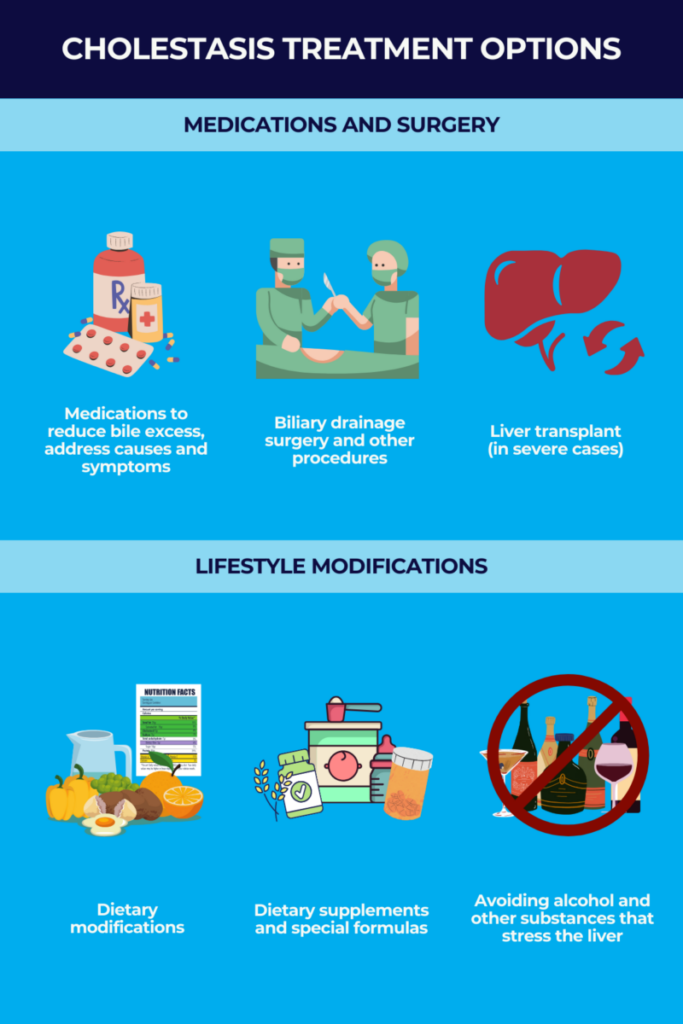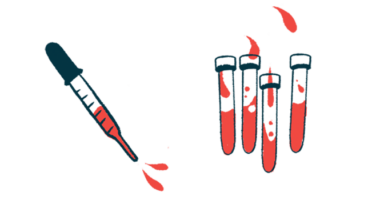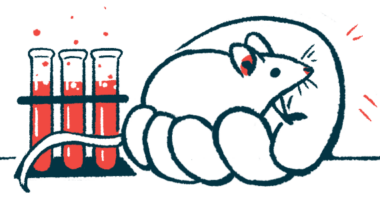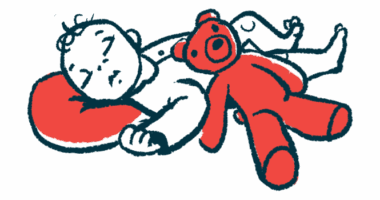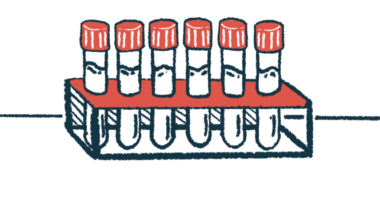Cholestasis treatment and management options
Last updated March 14, 2024, by Marisa Wexler, MS

Cholestasis treatment options aim to restore the normal flow of the digestive fluid bile through the bile ducts, a series of tubes that carry the sticky yellow-greenish fluid out of the liver where it’s made and to the small intestine.
In people with cholestasis, the flow of bile is slowed or stopped, and it can no longer get to the small intestine, where it helps to digest fatty molecules, fat-soluble vitamins like vitamin D, and certain proteins. Bile also carries certain liver waste products to be excreted in feces, which is hampered in individuals with cholestasis.
Impaired bile flow causes bile to build up and leads to cholestasis symptoms, including itchy skin, pale stools, and yellowing of the skin and the whites of the eyes, known as jaundice.
If untreated, the buildup of bile can set the stage for serious cholestasis complications, such as liver failure. Cholestasis during pregnancy, also called cholestasis of pregnancy, can be problematic for both the pregnant person and the developing fetus. As such, identifying the underlying cause and quickly providing appropriate care is vital. Specific cholestasis of pregnancy treatment is not always needed, as the condition often resolves on its own after the baby is born.
Understanding cholestasis
Cholestasis is the medical term for when bile flow is reduced or entirely stopped. When flow is stalled inside the liver, either due to issues with bile production or in bile ducts, the condition is called intrahepatic cholestasis. Conversely, when bile cannot flow through the bile ducts outside the liver, it is named extrahepatic cholestasis.
The condition may arise due to a physical obstruction, such as a gallstone, a tumor, or a buildup of scar tissue, that is preventing the normal flow of bile. Gallstones are hard deposits of bile compounds that can form in the gallbladder — an organ under the liver where bile is stored until it’s needed for digestion — and become stuck in the bile ducts.
Cholestasis also can result as a complication of other chronic liver diseases, such as hepatitis, alcoholic liver disease — a form of fatty liver disease — biliary atresia, or Alagille syndrome.
Rare autoimmune conditions affecting the bile ducts, including primary biliary cholangitis (PBC) and primary sclerosing cholangitis (PSC), as well as a group of rare genetic diseases collectively called progressive familial intrahepatic cholestasis (PFIC), also can cause cholestasis. Intrahepatic cholestasis also can develop in the later stages of pregnancy, where it’s then called intrahepatic cholestasis of pregnancy (ICP). Moreover, some medications can cause cholestasis as a side effect.
Because cholestasis treatment approaches vary widely depending on what’s causing problems with bile flow, identifying the condition’s root cause is key to ensure patients are managed appropriately.
Procedures to identify cholestasis causes and establish a cholestasis diagnosis may include blood tests to check liver function, imaging scans of the liver and surrounding tissues to look for signs of damage and obstruction, and, in many cases, more invasive procedures like endoscopy or liver biopsy. Endoscopy involves introducing a tube with a tiny camera through the mouth into the digestive tract, while liver biopsy consists of collecting a tiny piece of liver for analysis.
Treatment options
Treatment for cholestasis aims to restore the normal flow of bile by removing or resolving the underlying cause of reduced bile flow. In some cases, it can be as simple as stopping a medication that’s causing cholestasis as a side effect, or it may involve more complex approaches.
Depending on the condition’s specific cause, therapeutic approaches may include the use of a cholestasis medication or cholestasis surgery. Lifestyle changes — including dietary changes and the avoidance of potential triggers — may be required for the management of cholestasis symptoms and for improving quality of life among patients.
Two important factors in determining the right cholestasis treatment are whether the patient’s condition is due to pregnancy or if the individual has any other co-occurring diseases.
Medication
Certain medications may be used to manage cholestasis and some associated symptoms. Among them:
- Ursodeoxycholic acid (UDCA) or ursodiol (sold under the brand names Urso and Actigall) can make bile more soluble in water and prompt its flow through the bile ducts, thereby easing symptoms and helping to reduce liver damage. UDCA typically is the first choice of treatment in many types of cholestasis, including in cholestasis of pregnancy.
- Cholestyramine (sold as Prevalite and Locholest, among others) prevents bile acids from being reabsorbed after reaching the intestine, and also increases the amount of bile that gets excreted in feces. This medication is recommended as the first-line therapy to ease itching in people with cholestasis, as that symptom is caused by excess bile accumulation in the skin.
- Naltrexone (sold as Revia, Vivitrol, among others) is an opioid that works by blocking neurological signals that activate the sensation of itching, which may be used to help relieve cholestasis-related itchy skin.
A number of other medications also may be used to ease cholestasis-associated itching. Some of these are the antibiotic rifampin (also called rifampicin, and sold as Rimactane and Rifadin, among others) and the antidepressant sertraline (sold as Zoloft)
For PFIC in particular, two oral medications — Bylvay (odevixibat) and Livmarli (maralixibat) — are approved in the U.S. for reducing pruritus, or itching, in children and adults.
In many cases, medications also are given to address the underlying cause of cholestasis. For example, antiviral medications are used for cholestasis caused by viral hepatitis, while antibiotics can be taken when the condition is the result of a bacterial infection. Where cholestasis occurs due to inflammation, anti-inflammatory medicines can be used.
In cases of drug-induced cholestasis, stopping the culprit drug is usually sufficient to relieve the condition.
Surgery
Certain forms of cholestasis may benefit from surgical interventions. Cholestasis surgery is particularly relevant when something, such as a tumor or a lodged gallstone, is physically obstructing the bile ducts. In these cases, biliary drainage procedures can be used to remove the blockage.
The procedure of choice to remove physical obstructions is called an endoscopic retrograde cholangiopancreatography, or ERCP, which uses an endoscope to visualize and manipulate the bile ducts.
If ERCP fails, percutaneous transhepatic cholangiography (PTC), may be used. PTC is an imaging scan-guided procedure in which a thin tube called a catheter is inserted through the skin in the abdomen into the bile ducts to drain a blocked bile duct.
Both ERCP and PTC also can be used for biliary stenting. A stent is basically a thin, hollow tube that can be placed in a bile duct to keep it propped open. Biliary stenting may be done in patients with bile duct strictures, or abnormal bile duct narrowing, as well as when nearby cancers cause the bile ducts to be too narrow or pinched off.
If blockages are caused by gallstones, specific procedures may be recommended to remove the bile deposits and prevent future gallstones from being formed. These procedures include lithotripsy — a non-surgical technique that uses sound waves to break up gallstones — and, in some cases, cholecystectomy, or surgical removal of the gallbladder.
In instances where liver disease progresses to become severe, a liver transplant may be recommended as a last-resort treatment for cholestatis. During this procedure, a healthy liver from a donor is used to replace the patient’s diseased organ.
Lifestyle modifications
In addition to considering cholestasis medication and surgical options, patients may want to try to improve their overall health. Changes in lifestyle often are advised for people with cholestasis to help keep them in the best health possible.
Because cholestasis reduces the amount of bile that gets into the intestines, many people with this condition have problems absorbing fatty molecules, fat-soluble vitamins like vitamin A, D, E, and K, and certain proteins from the food they eat.
In these cases, dietary modifications and nutritional supplements are frequently recommended to ensure adequate nutrition. Following a low-fat diet can help relieve or prevent symptoms of poor fat digestion, while high-fiber diets help maintain healthy liver function.
Supplements of medium-chain triglycerides — fatty molecules that can be digested without bile — may be advised, especially for cholestasis in newborns, who strongly rely on fat from milk for their nutritional needs. Supplements of fat-soluble vitamins also are frequently recommended.
Patients are advised to talk with their healthcare team to determine a cholestasis diet that’s appropriate for their specific situation.
In addition to dietary modifications, living well with cholestasis often involves taking preventive steps to avoid additional stress on the liver. These steps may include limiting or abstaining from alcohol and getting recommended vaccinations against liver infections. Certain medications and supplements known to cause liver damage also should be avoided.
Cholestasis home remedies — applying ice or moisturizing agents to a patch of skin that’s particularly itchy, or having cool baths, as two examples — also may help soothe itching for some people with the condition. However, because they don’t address the underlying cause of the disease, cholestasis home remedies should never be used as a substitute for appropriate medical care.
Additional lifestyle modifications and cholestasis treatments may be recommended depending on the specific underlying cause of cholestasis.
Managing cholestasis during pregnancy
Cholestasis of pregnancy, also called intrahepatic cholestasis of pregnancy (ICP), is a specific form of cholestasis that can develop in the later stages of pregnancy, usually at the end of the second trimester or the start of the third trimester.
The condition is the most common pregnancy liver-specific disease and is thought to develop due to elevated hormone levels that interfere with normal bile flow. Cholestasis symptoms — most notably intense itching — usually resolve on their own after the pregnancy ends, but the condition can sometimes result in serious complications for both the mother and fetus.
Thus, an early ICP diagnosis is key for timely cholestasis of pregnancy treatment, the main goal of which is to reduce the risk of cholestasis complications and ease maternal symptoms.
In addition to receiving cholestasis medications for itchy skin and other cholestasis symptoms, people with ICP also should undergo more intensive fetal monitoring during pregnancy. These regular evaluations might be able to detect some health concerns, but they cannot predict when a possible ICP complication will develop.
In severe cases where continuing the pregnancy with ICP is deemed riskier than premature birth (i.e., before about 37 weeks of pregnancy), inducing early delivery of the baby may be recommended. Early delivery may be considered for ICP patients who have:
- symptoms that don’t improve with medications like UDCA
- previously experienced ICP that led fetal death
- very high levels of bile acids in the blood.
ICP itself is not considered an indication necessitating a Cesarean section delivery, known as a C-section, and also is not a contraindication to breastfeeding. People who develop ICP during pregnancy generally do not experience any issues while nursing.
While itching typically goes away within a few days after delivery, and blood bile acid levels eventually normalize, it is recommended that patients undergo bile acid and liver function tests about four to six weeks after delivery to ensure their results are back to normal. If liver problems persist after more than eight weeks after delivery, patients are recommended to undergo further evaluation for other liver diseases.
Liver Disease News is strictly a news and information website about the disease. It does not provide medical advice, diagnosis or treatment. This content is not intended to be a substitute for professional medical advice, diagnosis, or treatment. Always seek the advice of your physician or other qualified health provider with any questions you may have regarding a medical condition. Never disregard professional medical advice or delay in seeking it because of something you have read on this website.
Recent Posts
- New biomarkers may help detect pregnancy-linked liver complication
- Access to food is a survival tactic when your liver needs nutrition
- Belapectin may help reduce liver scarring in those with severe MASH
- Parents and son are all on a path of discovery with Alagille syndrome
- Stem cell therapy may boost liver health in infants with biliary atresia
Related articles
